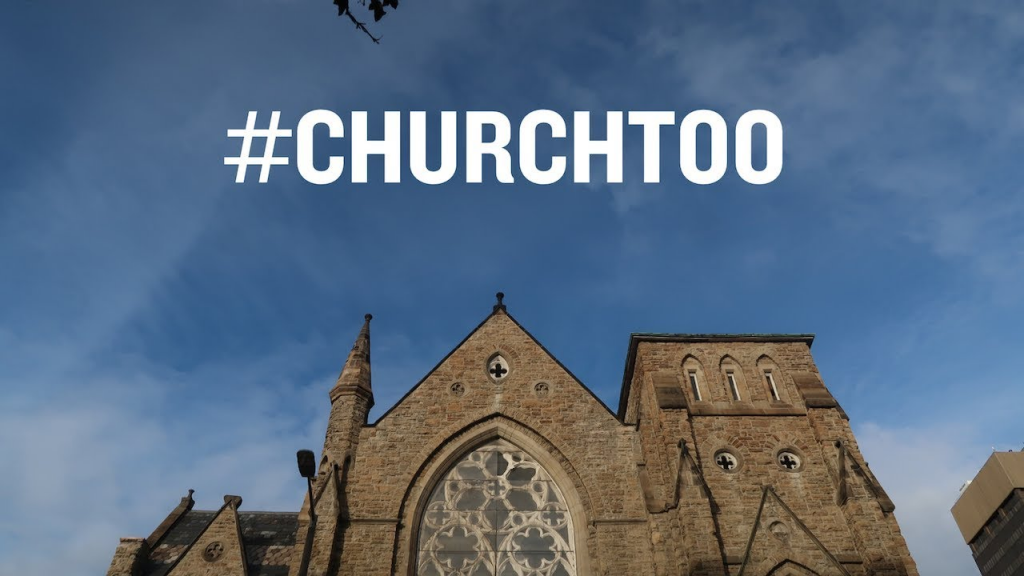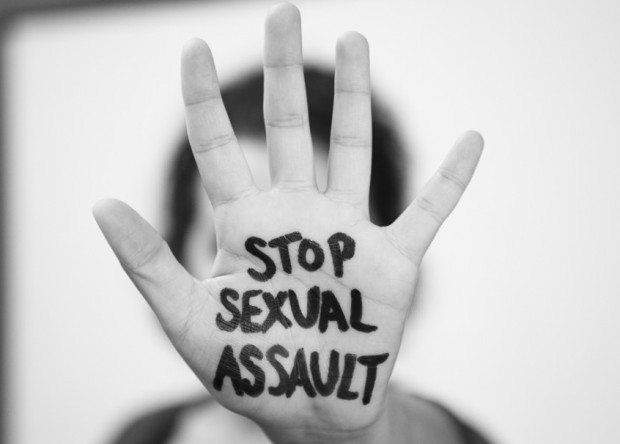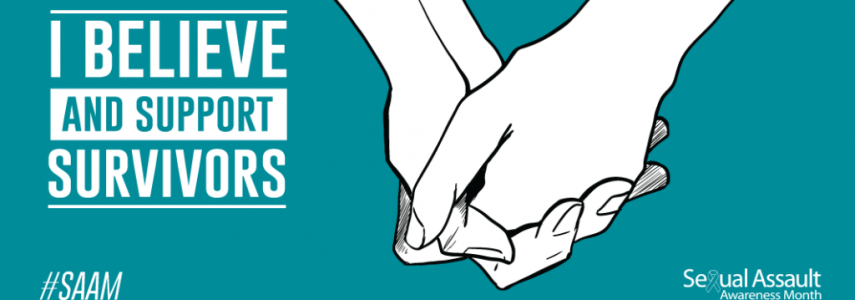Introduction
By Victoria Hernandez
Religion is a faith-based organization. Members of the church seek refuge in the hands of the Holy Spirit. Among the open arms presented to any common wrongdoer lives that of unseen evil.
In most places of worship, there is a head position ordinarily held by a man. A priest, minister, pastor, and so on. Due to the strict laws and regulations enforced outwardly by the bible, in the church, most priests are held to an abnormally high standard regarding their intentions. A godly standard.
Sexual abuse has been found in and surrounding the church a great deal, over a large span of time. As media continuously becomes increasingly vocal, more individuals feel the security and confidence to speak up with their story.
“The majority of known child sexual-abuse cases in the U.S. Catholic Church took place in the 1960s, ’70s, and ’80s,” said Emma Greene, a journalist for The Atlantic. “Major national news outlets began covering those stories by the early ’90s”.
One of the most recent cases comes from an Australian place of worship. In 1996 two young boys were abused by a high-ranking cardinal, George Pell. Despite the case initially being over a decade old, it was found that the court had banned the press from reporting on it. The case finally saw the light in February of 2019.
Patriarchy has an immediate effect on churches. The men in charge want power and control and they perpetuate this through abuse.
The church participants are talking about it, the families affected are talking about it, we’re talking about it, are you?
Media Artifact and Analysis
Spotlight
By Rachael Kitts
“Spotlight” directed by Tom McCarthy is a 2015 historical fiction film depicting the harsh reality of child sexual abuse by Catholic priests in the Boston area. The viewpoint of the film comes from the newspaper investigative journalist unit for The Boston Globe also known as the “Spotlight” team. After Marty Baron is brought on as a new editor for the newspaper, he gets word of the priest who was arrested for child molestation and was released with no word after the fact. This leads to a string of events in which Baron investigates the abuse in depth going on within the Catholic church. The team identifies 13 priests through the help of SNAP (Survivors Network of those Abused by Priests). They also discover that 50% of priests aren’t celibate and 6% of priests are predators. The story gets deprioritized, as 9/11 has now occurred, however, it was brought up again when publicly available documents that confirm Cardinal Law was made aware of the problem and ignored it.
This fim supports the argument that, within the church, adult men are held at a much higher standard than anyone else and will often abuse their power because of this position. The church has chosen to remain silent with the abuse within its system on behalf of their cardinals and priests, the abusers. This film frames the issue of child sexual abuse by Catholic priests as something the church has chosen to cover up and deny allegations, but victims are now rising up against this abuse of power. While those in religious positions are often held to strict standards and behaviors, it would be too scandalous to out these men who molest their church members. Perhaps because priests and cardinals are men is the reason that they have been able to get away with this: their power makes their stories and coverups more believable. These children trusted their priests because that’s who the church told them to look up to, and they were taken advantage of. Even throughout all of the accusations and allegations, these men still walked away free with just a slap on the wrist.
The standpoint the film “Spotlight” is on the side of the victims; they agree that the church has neglected its people by covering up these scandals. The patriarchal nature of the Catholic church has proved to be very dangerous when power is placed in the wrong hands.
Had the abuser been a woman, the narrative would have been much different for not holding the same positions of power as these men have. This level of power has had us never question the reality of this abuse prior to many victims speaking out in large numbers; gender plays a part in this unfairness due to the standards we hold men to. Another factor is their position in the church as well.
Overcoming Silence
By Rebecca Leonhardt
Doris Wagner was a Catholic nun that was raped by her superior in 2008. She felt afraid and alone and thought to herself that no one would believe her story. A few years later she was harassed by her confesso. He had told her that there was no way to marry but he had other ideas with her. When she went to ask if she could see another confessor she was asked why and forced to tell them the reason. She was shocked that she wasn’t blamed because when she spoke out about her rape in 2008 she was asked if she had used contraceptives.
Because of her personal experiences, she has now dedicated her time to tell her story to others and speak up about others who have been abused within the church.
Wagner stated in her “overcoming silence” speech that when her rape happened she believed she was the only nun who had ever been raped by a priest because no stories of rape had been surfaced within the Catholic church. She later mentions a statistic from the 1990’s that approximately 30% of Catholic sisters are raped by priests in their lifetime with the church. That number is sickening. The fact that this is unknown to many people shows how easy it is for churches to cover up and push way rape or sexual harassment accusations.
With Wagner and other women coming out with their stories in Voices of Faith is just a beginning step for these women. Many people don’t look into stories and facts of the Catholic church because it doesn’t affect all, but the numbers of cases keep growing larger and won’t be stopped until for know about the topic.
-Author Jennifer Lynn Armentrout in her series “Wait for you”.
“The silence was killing me. And that’s all there ever was. Silence. It was all I knew. Keep quiet. Pretend nothing had happened, that nothing was wrong. And look how well that was turning out.”
Resources
By Jessica Shippelhoute
—America Ferrera, Instagram, October 2017
“First time I can remember being sexually assaulted I was 9 years old. I told no one and lived with the shame and guilt thinking all along that I, a 9 year old child, was somehow responsible for the actions of a grown man. I had to see this man on a daily basis for years to come. He would smile at me and wave, and I would hurry past him, my blood running cold, my guts carrying the burden of what only he & I knew — that he expected me to shut my mouth and smile back. Ladies, let’s end this silence so the next generation of girls won’t have to live with this bullshit.”
Methods of Help
- Help books:
- Helping Victims of Sexual Abuse: A Sensitive Biblical Guide for Counselors, Victims, and Families by Lynn Heitritter and Jeanette Vought
What Churches Can Do
Published by Kat Jayne on Pexels
Beth Backes describes three main changes that church needs to take in order for violence and abuse to end against young women. Backes article “#churchtoo: three changes we must make now” raises concerns about bringing children to church and inviting hidden evil. She shares how “Sexual abuse in any form is fundamentally about power. Because church systems operate with some level of hierarchy, there is a high risk of leaders abusing that power over those they serve.” People want change in the church, they don’t want to feel afraid to take their little ones to service. Backes article states that “According to the Centers for Disease Control and Prevention, 18 percent of women in the U.S. have experienced rape, and nearly 6 percent have experienced some other form of sexual violence”. Listed below is the four ways the church can go about bring change and reform to create a safe place for people.
- Breaking the code of Silence
- Acknowledge the problem
- Create a safe environment
- Sexual harassment training
- Taking care of the Victims
Where to go now?
Chris Kaiser author of “In Texas, There are some sexual assaults you can’t go to jail for,” a featured article in TAASA’s Summer 2016 Newsletter, addresses the issue of “fondling” and how people abuse this term by stepping over the line. Kaiser’s article explores how “First, we must acknowledge that touching another person’s body for sexual gratification without consent—whether an adult or a child, and whether or not it causes “physical” injury—is an inherently violent act. Like rape and other forms of sexual violence, it’s an act of negating a person’s will and bodily autonomy.” Kaiser explains how terminology gets used as an excuse to justify inappropriate actions. He shows how “These offenses are called different things in different states: “indecent assault,” “sexual assault” (distinguished from “rape” in some jurisdictions), “groping,” “abusive sexual contact,” “sexual imposition.” The titles are less important than the fact that nearly every state in the country recognizes the importance of a meaningful criminal response.” People should be able to feel safe in whatever environment they may be in and shouldn’t have to worry about being touched in any form. Kaiser points out that “The vast majority of Americans live subject to laws that treat forcible groping and sexual assault as serious criminal conduct.”
What the Public Can Do
Junno Arocho Esteves writes in “French cardinal convicted for failing to report sexual abuse,” article how “ A French cardinal was given a six-month suspended sentence at a civil trial after he was found guilty of covering up abuses committed decades ago by a priest.” Esteves points out how the flaws in the justice system and the need to hold convicted priests accountable. The author shares how “Lyon Cardinal Philippe Barbarin, 68, was convicted March 7 of covering up abuse by Fr. Bernard Preynat, who confessed to abusing minors at Lyon’s Saint-Luc Parish, where he ran a large Catholic Scout group in the 1970s and 1980s.” In the midst of the Barbarin abuse , there was a cover up by another Priest who also participated in mistreating minors. Esteves shares how “The bishops also reaffirmed their “commitment to fight with determination against all sexual assaults committed by the clergy against minors.” After this scandal the church wanted to reach out and share their plan in fighting this ongoing battle of sexual assault in the church.
Rev. Thomas V. Berg shares in “Want to address priest sexaul abuse? The Catholic Church needs to overhaul its seminars “ article a need for change in the church. Berg expresses how “The church urgently needs new approaches to preparing men for priestly ministry given today’s sexualized, secularized culture and the personal challenges facing seminarians.” Sexaul assault training is needed as a foundation for young men who want to be a priest. Berg states how it’s “Not infrequently, [but in some cases] they need counseling to discover and deal with trauma: “father wounds,” bullying, parental divorce, porn addiction and even sexual abuse.” The author goes into detail about what the seminars would be like and that the program would consist of “a heavily academic four-year program, [where] we superimpose elements of human, spiritual and pastoral preparation for ministry” Berg feels like the “ bishops need to work urgently to ensure that in our seminaries there reigns an inner culture of trust, transparency and honest dialogue between seminarians and the formation team”. The author raises concerns of whether or not certain seminaries will work and express that the “Bishops should think seriously about either reforming or closing those seminaries that are failing in their mission.
Julie Zauzmer express in “Pope Francis wants psychological testing to prevent problem priests. But can it really do that?” article how psychology testing to uncover certain tendencies in men coming into the particat raises concerns about the effectiveness in the method chosen. Zauzmer states that “ Pope Francis recently announced a policy he wants to implement on a worldwide scale: No man should become a priest without a psychological evaluation proving he is suited to a life of chastity.” Even though “As it stands, there is no single agreed-upon method for conducting these assessments of priests,’ said Zauzmer doesn’t mean that certain measures aren’t taken to try and ensure a safe environment. Zauzmer shares expert “Psychologist Taryn Millar “ opinion on certain tests that are administered to try and uncover mental issues ranging from “…schizophrenia to hypochondria to masculinity) and the NEO-PI-3 (an assessment of personality traits like neuroticism, extraversion and agreeableness).” Zauzmer points out how ‘Some of the tests that Millar says she administers are standard psychological instruments…[while], other components are less common in conventional psychology, including the thorough history of sexual urges that the clinicians ask for, and the spiritual evaluation conducted by a priest or another Catholic religious leader.”





